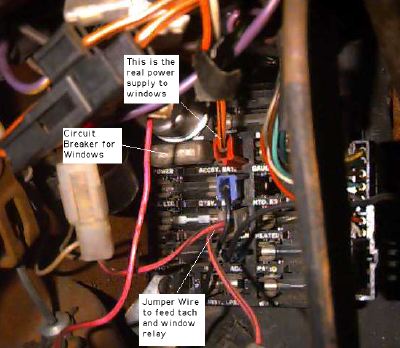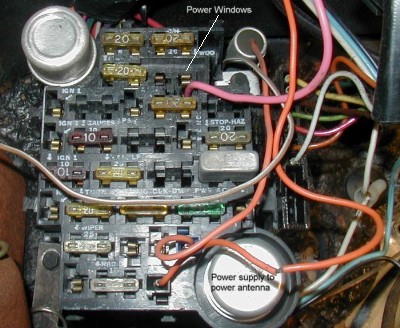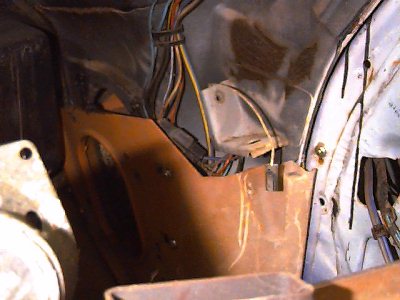Door RegulatorThe power window regulator mounts in different holes from the manual, and is oriented differently. This can be confusing if you're doing a conversion.These holes may not even be drilled on your door.This is a 1980 door with original power windows. Early 70's doors use a different stamping, but the regulator holes are in the same locations. The purple box shows approximately where the motor will be. These doors are all spot-welded by hand along the bottom. They appear to be cut, modified, and welded back together. I can't imagine why this was done, but it's original. |  |









